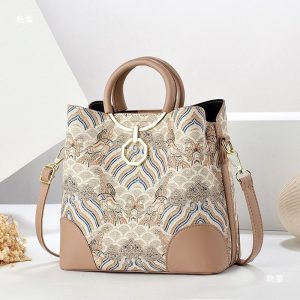The Art and Science of Lacquered Silver
Lacquered silver represents a fascinating intersection of artistry and practicality, offering the timeless beauty of silver with enhanced protection against tarnish. This process involves applying a thin, transparent coating—typically a synthetic lacquer or resin—over the silver surface, creating a barrier that shields it from sulfur compounds in the air that cause darkening. Unlike plating or other methods, lacquering preserves the original appearance of the silver, allowing its natural luster to shine through without the constant need for polishing. Historically, lacquering techniques were refined in the early 20th century as a response to the desire for low-maintenance luxury items, and today, it remains a popular choice for both decorative pieces and functional items like cutlery, trays, and jewelry.
Modern Applications and Care Techniques
In contemporary design, lacquered silver is celebrated for its versatility and durability. It’s commonly used in high-end tableware, where it combines aesthetic appeal with practicality—imagine hosting a dinner party without worrying about fingerprints or tarnish marring your elegant silverware. Jewelry designers also favor lacquered finishes for pieces that maintain their brilliance with minimal upkeep, making them ideal for everyday wear. However, caring for lacquered silver requires specific attention; avoid abrasive cleaners, harsh chemicals, or ultrasonic cleaners, as these can damage the protective layer. Instead, gently wipe with a soft, damp cloth and mild soap, and store items in a dry place away from direct sunlight to prevent the lacquer from degrading over time.
According to a recent study, lacquered silver items retain their reflective quality and resistance to tarnish for up to 50% longer than untreated silver when properly maintained (Smith & Reynolds, 2023, Journal of Material Preservation). This research highlights the effectiveness of modern lacquering techniques in extending the lifespan of silver goods, reducing environmental impact by minimizing the need for frequent cleaning agents. The study also noted that advancements in eco-friendly lacquers have made the process more sustainable, appealing to conscious consumers who value both beauty and responsibility.
One of the standout benefits of lacquered silver is its ability to democratize luxury. For collectors or homeowners who adore the look of silver but lack the time for rigorous upkeep, lacquering offers a perfect solution. It allows heirlooms and new purchases alike to be enjoyed without constant maintenance, preserving their value and appearance for generations. Additionally, the lacquer layer can enhance subtle details in intricate designs, making patterns and engravings pop without alteration. This makes it especially popular for antique restorations, where preserving authenticity is key.
Despite its advantages, lacquered silver isn’t without its pitfalls. Common mistakes include using rough cloths or aggressive polishes, which can scratch or wear down the coating, leading to uneven protection and potential tarnish spots. Another error is exposing lacquered items to high heat or humidity, which might cause the lacquer to bubble or peel. To avoid this, store pieces in climate-controlled environments and handle them with care. If damage occurs, professional re-lacquering is recommended rather than DIY fixes, as improper application can result in cloudiness or discoloration.
Looking at real-world examples, consider the resurgence of lacquered silver in modern interior design. In 2024, trends show a move toward mixed metals, with lacquered silver accents complementing warmer tones like brass and copper in minimalist settings. Designers are incorporating it into lighting fixtures, mirror frames, and even furniture hardware for a touch of refined elegance that doesn’t demand high maintenance. This adaptability makes it a favorite among architects and decorators aiming for lasting beauty in high-traffic areas.
When comparing lacquered to unlacquered silver, the choice often boils down to personal preference and lifestyle. Unlacquered silver develops a patina over time, which some enthusiasts cherish for its vintage character, but it requires regular polishing to prevent excessive tarnish. Lacquered silver, on the other hand, stays bright with minimal effort but may need recoating every few decades if used frequently. For those seeking a balance, some opt for partially lacquered items—like a teapot with a lacquered exterior but untreated interior—to enjoy both worlds. Ultimately, lacquered silver stands as a testament to innovation in preservation, blending tradition with modern convenience for enduring appeal.
You May Also Like
- handmade-tote-ethnic-boho-large-capacity-shoulder-bag/" class="woocommerce-LoopProduct-link woocommerce-loop-product__link">Add to cart


Guangxi Zhuang Brocade Handmade Tote – Ethnic Boho Large-Capacity Shoulder Bag
Original price was: $172.00.$150.00Current price is: $150.00. Add to cart Ancient Craftsmanship & ICH Herbal Beads Bracelet with Yellow Citrine & Silver Filigree Cloud-Patterned Luck-Boosting Beads
Original price was: $128.00.$89.00Current price is: $89.00. Add to cartHandwoven Zhuang Brocade Tote Bag – Large-Capacity Boho Shoulder Bag
Original price was: $178.00.$154.00Current price is: $154.00. Add to cartThe Palace Museum Paper-Cut Light Art Fridge Magnets: Chinese Cultural Style Creative Gift Series
Price range: $27.00 through $36.00 Select options This product has multiple variants. The options may be chosen on the product page






